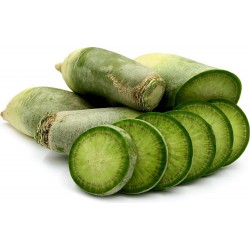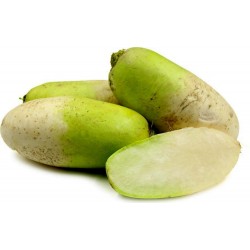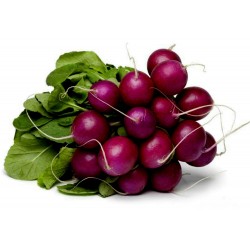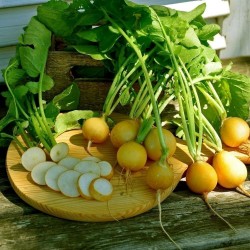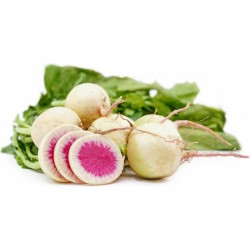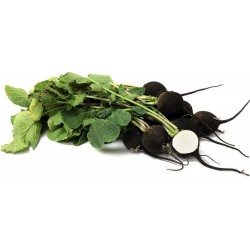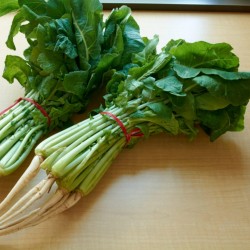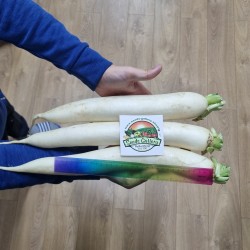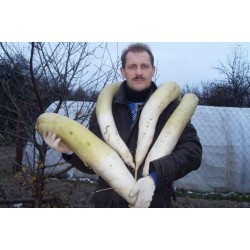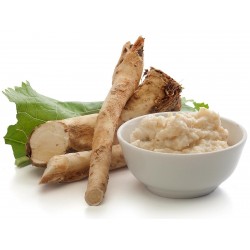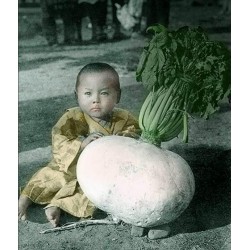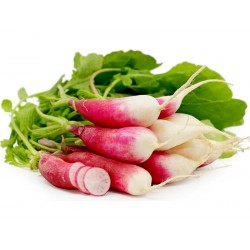Seeds Gallery Com,
5/
5
<h2><strong>Graines de Raifort champêtre (Armoracia rusticana)</strong></h2>
<h2><span style="color: #f80303;"><strong>10 Graines par sachet.</strong></span></h2>
<p><span>Le Raifort (Armoracia rusticana) est une plante vivace potagère de la famille des Brassicacées, cultivée pour sa racine à usage condimentaire. Connue également sous les noms communs de « Radis de cheval » ou encore de « Wasabi Alsacien », cette plante a longtemps été un légume oublié ! Mais depuis quelques années, grâce à l'impulsion donnée par quelques chefs alsaciens, il revient en force sur nos tables.</span></p>
<p><span>La racine de raifort râpée est utilisée en condiment. Elle a une saveur très forte, piquante et poivrée. Certains dirons que son goût est encore plus prononcé que celui du wasabi ! Mais contrairement à d'autres condiments comme le piment ou la moutarde, l'effet piquant disparaît entre chaque bouchée. Le raifort est surtout utilise pour relever les bouillons de pot-au-feu</span></p>
<p><span>Cultivé presque exclusivement dans l'est de la France, le raifort est consommé principalement en Alsace et en Lorraine. Pour sa culture, le Raifort demande un sol frais, profond et riche ainsi qu'une exposition ensoleillée. La récolte des racines se fait à l'automne et durant l'hiver, en fonction des besoins. </span><span>Semis des graines en mars-avril en pleine terre, en lignes espacées de 40-50 cm.</span></p>
<h2><strong><span>Fiche technique</span></strong></h2>
<p><span>Période de plantation : Printemps</span></p>
<p><span>Période de récolte : Automne</span></p>
<p><span>Couleur des fleurs : Blanc</span></p>
<p><span>Exposition : Ensoleillée</span></p>
<p><span>Type de sol : Riche</span></p>
<p><span>Rusticité : Rustique</span></p>
<p><span>Multiplication : Semis, bouturage</span></p>
<h2><em>How to Grow Horseradish from Seed</em></h2>
<p><strong>Timing</strong></p>
<p>For first season harvests, start the seeds indoors in January to February and transplant out in April. The goal is to achieve large, fully established roots that can be divided and/or replanted. If time is not pressing, direct sow any time from March into summer. Optimal soil temperature: 7-23°C (45-75°F).</p>
<p><strong>Starting</strong><br />Sow seeds 5mm-1cm (¼-½”) deep in well cultivated, deep soiil. Seeds will sprout in 7-25 days, depending on conditions. Thin or transplant to 20cm (8″) apart in rows 40-50cm (16-20″) apart.</p>
<p><strong>Growing</strong><br />Ideal pH: 6.0-6.8. Well drained, warm soil in full sun is best. Raised beds help with both drainage and warmth. Use 1 cup of complete organic fertilizer for every 3m (10′) of row. Newly emerged leaves are edible, or should be left to mature if growing for the roots. The flower petals are also edible — flowers should be removed before they set seeds, as they will self-sow with enthusiasm.</p>
<p><strong>Harvest</strong><br />For the leaves, harvest as needed, shortly after they emerge, before they become woody. For the roots, harvest November through March. The roots can also be lifted and stored for spring planting to keep the crop going from season to season.</p>
<p><strong>Diseases & Pests</strong><br />In our experience, insects do not cause problems for horseradish.</p>
<p><strong>Companion Planting</strong><br />Horseradish is thought to repel aphids and whiteflies, blister beetles, potato beetles, and some varieties of caterpillar. Its flowers attract beneficial predatory hoverflies.</p>
<h2><a href="https://www.seeds-gallery.shop/fr/accueil/graines-de-wasabi-eutrema-japonicum.html" target="_blank" title="Wasabi Graines vous pouvez acheter ici" rel="noreferrer noopener"><span style="color: #008000;"><strong>Wasabi Graines vous pouvez acheter ici</strong></span></a></h2>
VE 117 AR (10 S)




